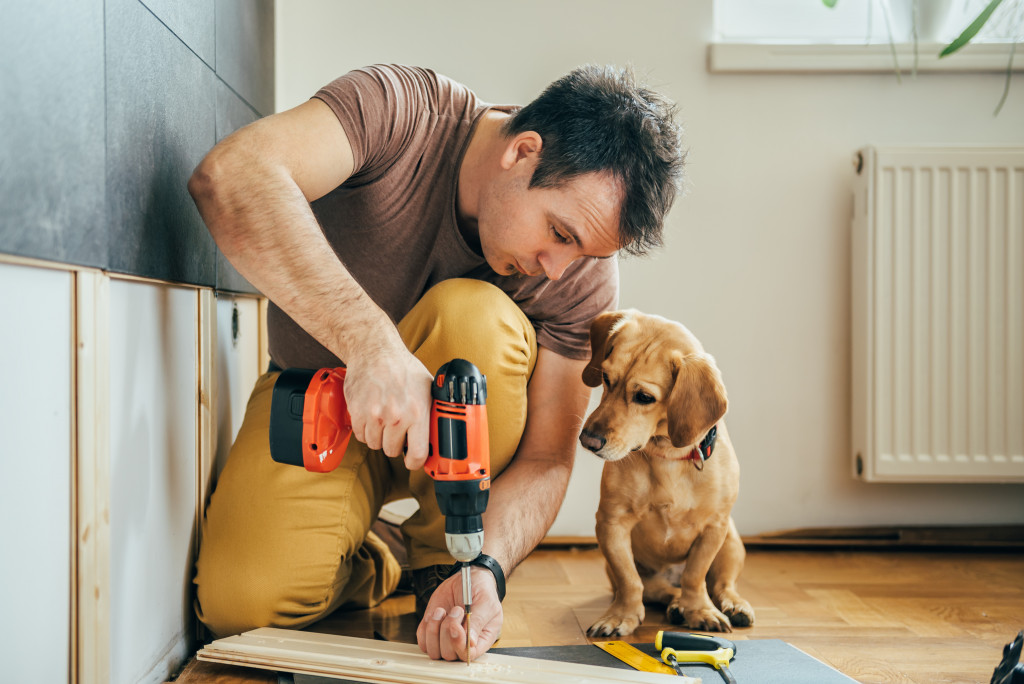Every homeowner wants their dream house to withstand the test of time and the ever-changing environment. Some people might be surprised to learn that in the United States, nearly 15 million homes have been impacted by severe natural disasters since 2011. The cost of these events is estimated at $56 billion.
Some typical disasters that cause homes severe damage include hurricanes, tropical storms, wildfires, and floods. These disasters have one thing in common: they can all be mitigated by making a few key improvements to your home. Here are five key improvements you can make to your home to increase its longevity:
Install a New Roof
One of the most important things you can do to protect your home is to install a new roof. A new roof will protect your home from water damage, wind damage, and debris. Some of the signs that you need a new roof are:
- Curling and buckling shingles: This is a sure sign that your roof is reaching the end of its lifespan. Shingles are designed to lay flat against your roof, so they’re no longer doing their job if they’re curling or buckling.
- Daylight through the roof: If you can see daylight coming through your roof, that means there are holes in your roof. These holes must be repaired as soon as possible to prevent further damage.
- Roof covered with moss: Moss can hold moisture against your roof, eventually leading to leaks. If you see moss growing on your roof, have it removed as soon as possible.
Update Your Windows and Doors
Old windows and doors can be a source of drafts and air leaks. You can help seal your home against the elements by updating your windows and doors. If you don’t have strong window coverings, you can also consider adding window film to help insulate your home. For doors, choose a solid wood door or a metal door with a weather-stripping seal.
Things you need to consider before changing your windows
- Age of your windows: If your windows are more than 20 years old, it’s probably time to replace them.
- Type of windows: The type of window you choose will depend on the climate you live in and your budget.
- Cost of replacement windows: Replacement windows can be expensive, so you’ll need to factor that into your decision.
- Potential energy savings: Newer windows are more energy-efficient than older windows. This means they’ll help keep your home cooler in the summer and warmer in the
Add Insulated Roofing
Having insulated roof panels installed is a great way to keep your home cool in the summer and warm in the winter. There are two types of insulation: roll-roofing and batten-style. Roll-roofing is the most common type of insulation, and it’s easy to install. Batten-style insulation is more expensive but provides a higher R-value, which means it’s more effective at insulating your home.
Insulate roofing distributes heat evenly, so you won’t have any trouble with hot spots that can lead to condensation on windowsills or doors leading outside. It will surely help you save money on your energy bills and make your home more comfortable year-round.
Metal roof panels provide excellent fire resistance. The steel used to make them is non-combustible and will prevent the spread of any fires into your house. This can be especially helpful if you live in an area prone to wildfires!
Seal the Cracks and Crevices
Another way to help increase the longevity of your home is to seal the cracks and crevices in your walls and foundation. This will help to prevent water damage, pests, and other potential problems. To do this, you’ll need to use caulk or expanding foam, a flexible sealant that can fill small gaps and cracks.
Expanding foam is a rigid sealant that can be used to fill more significant gaps and cracks. When choosing a caulk or expanding foam, ensure it’s rated for use on exterior surfaces. Apply the caulk or expanding foam to the cracks and crevices, and then smooth it out with a putty knife. Allow it to dry for 24 hours before painting or staining.
Choose New Siding Material
If your home’s siding is over 20 years old, it’s time to consider replacing it. Many types of siding materials are available, such as wood, vinyl, and fiber cement. The type of siding you choose will depend on your budget and the climate you live in.
Wood siding is the most common type of siding, and it’s also the most expensive. Vinyl siding is less costly than wood, but it’s not as durable. Fiber cement siding is more durable than vinyl, and it’s also fire-resistant.
You’ll also need to decide on a color when choosing new siding. Light-colored siding will help to reflect the sun’s heat, making your home cooler in the summer. Dark-colored siding will absorb the sun’s heat, making your home warmer in the winter.
Final Thoughts
Home is where the heart is, and you can make your home as wonderful as possible. By following these home improvement tips, you can be sure your house will stand the test of time structurally and aesthetically.


